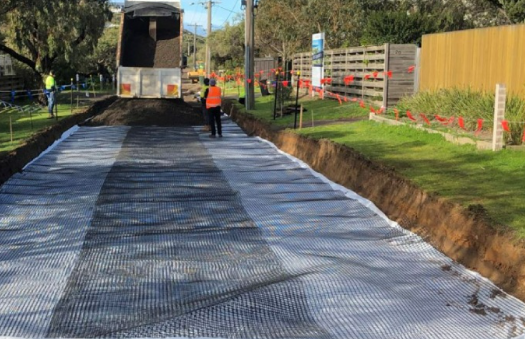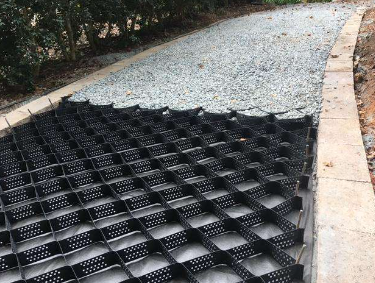- Understanding the Role of Geomembrane Liners in Waste Management
- Innovations in Geomembrane Liners for Water Management
- Geomembrane Liners: A Comprehensive Guide
- The Future of Geomembrane Liners in Civil Engineering
- Geomembrane Liners: Enhancing Landfill Stability
Manager:
WhatsApp:+86 177 0135 2670
Tel:+86 177 0135 2670
Email:marketing@okorder.com
Address:3rd Floor, No.2 Building, No.1 Sanlihe Road
How many layers of geogrid do I need?
The main question that often comes up when discussing the subject of geogrids is how many layers are needed in order to get the optimal performance. How many layers of geogrid do I need? How many layers of geogrid are necessary for optimal performance? What determines the number of layers that are required?
Geogrids or polymer meshes are very important materials in various civil engineering projects as they help in soil structure reinforcement and stabilization. Geogrid types include plastic grid, wholesale grid, glass fiber grid and fiberglass geogrid which all have unique characteristics and applications. This requires investigating the factors at play during layering of different kinds of grids.

Understanding Geogrids
Before jumping into discussions about what should be taken into account while layering it is key to have a basic comprehension concerning geogrids. Geogrids usually consist of high-strength polymers such as polyester, polyethylene or fiberglass shaped into a lattice-like structure. These materials possess excellent tensile strength as well as load spreading capacities which make them most suitable for reinforcing soil structures.
Types of Geogrids
There are several types available depending on specific use cases:
1. Plastic Geogrid:
These are polymeric constituents applied widely across diverse civil engineering practices to act as soil reinforcers by helping distribute loads evenly thus preventing soil erosion. They can be used in road construction retaining walls and slope stabilization because they are light weight, flexible , easy to install.
2. Wholesale Geogrid:
Wholesale forms refer to those gridding that can be bought in bulk amounts. There may be different materials and shapes among these products due to particular project demands These are mostly used by contractors and firms involved in big scale tasks where cost-efficiency is highly valued while exceptional quality must not be compromised.
3. Fiberglass Geogrid:
They are made from glass strands coated with polymer resins thus making them weather resistant and durable with high tensile strength. Fiberglass geogrids are commonly used in pavements overlays, airport runways and railway embankments among others as a long term reinforcement material.
4. glassfiber geogrid:
These are glass fiber materials that are constructed in almost the same way as fiberglass geogrids. They have significant tensile strength and stiffness thus can be applied to more demanding roles requiring higher levels of reinforcement. Glassfiber grid is found in road construction, bridge abutment, foundation stabilization etc.
Factors Influencing Layering
Soil Conditions:
The nature and state of soil defines how many layers of geogrid it will need. In case of cohesive soils with low bearing capacity, multiple layers of geogrid may be required for proper reinforcement and load transfer.
Design Requirements:
The actual design specifications such as loads expected to be carried on them, traffic flow rates if any and environmental factors shape how these nets are layered Engineers carry out an extensive analysis before designing the optimal number of layers based on project details and performance standards.
Geogrid Properties:
For instance, tensile strength, aperture size or flexibility of the material making up a certain kind of geogrid that determine how well it will support soil structures.Knowing that stronger grids would require fewer layerings than weak ones for similar purposes.
Installation Method:
How these grids should be laid also has an impact on the layering procedure Proper installation techniques like overlap requirements and seam integrity facilitate correct load distribution across sections thereby preventing potential failure mechanisms Optimum performance will result from proper anchorage into ground soil during installation processes.
Determining Optimal Layering
In order to ascertain the best number of geogrid layers for given projects, engineers usually carry out comprehensive analyses and calculations taking into consideration the enumerated above factors. This process includes:
1. Site Evaluation:
Engineers would evaluate site conditions including soil properties, topographical characteristics and environmental aspects to understand project specifications and limitations.
2. Load Analysis:
Soil structures are subjected to anticipated loads and traffic patterns through a detailed load analysis during their service life span.
3. Geogrid Selection:
Based on the findings of site evaluation and load analysis, the engineers choose the most appropriate kind and specification of geogrid that meets their needs for a particular project.
4. Layering Design:
Geogrids layering plans are designed by applying engineering principles and using computer software programs that take factors such as soil reinforcement requirements, safety factors, cost implications among others into account.

Conclusion
The answer to how many layers of geogrid are required depends on different considerations which include: soil condition, design demands, type of geogrids, and method of installation among others. Reinforcing soil structures in civil engineering projects is accomplished with plastic geogrids, wholesale geogrids fiberglass geogrids or glassfiber geogrids which are flexible enough for various uses. By conducting thorough analyses and adhering to best practices in geogrid design and installation, engineers can ensure the successful implementation of geogrid-reinforced structures that meet performance and durability expectations."
- Previous:What can I use instead of geogrid?
- Next:Where are geogrids used?
-
2024-06-12Asphalt fiberglass geogrid construction plan
-
2024-06-04Asphalt fiberglass geogrid construction plan
-
2024-05-21What is the disadvantage of geogrid?
-
2024-05-21What is the lifespan of geogrid?
-
2024-05-21What are the 3 main uses of a geotextile?






